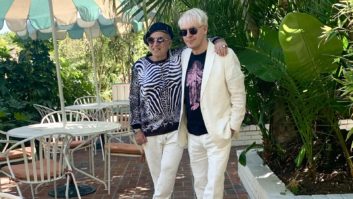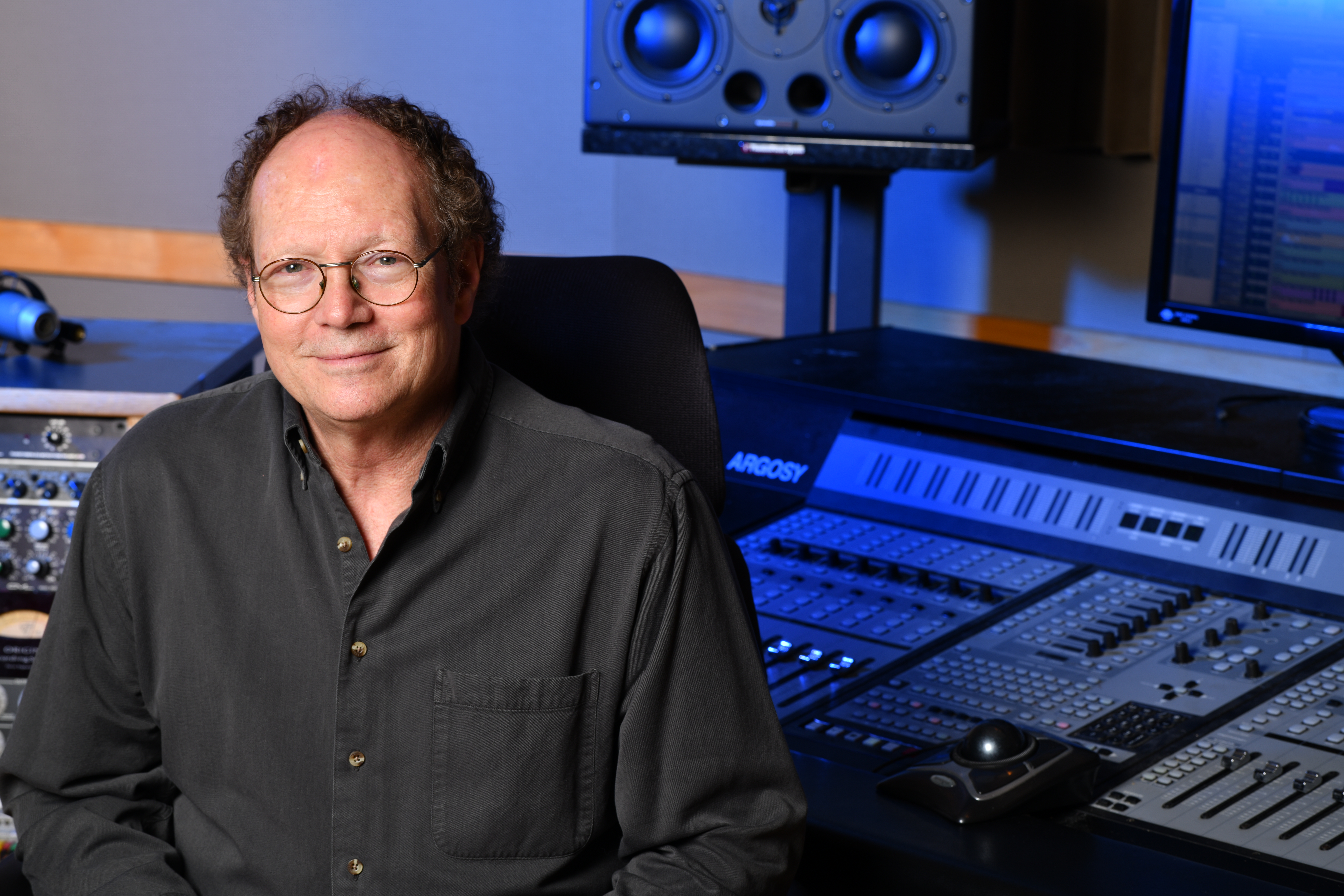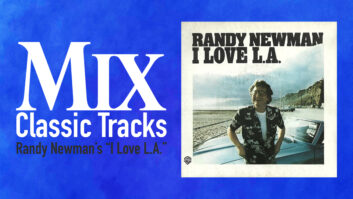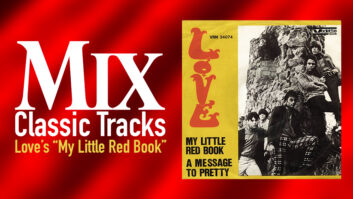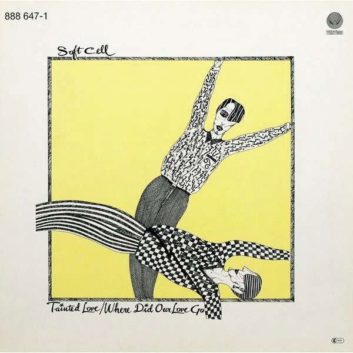
Mike Thorne first heard Soft Cell’s version of the song “Tainted Love” on a demo while he was in London in 1981 working on the only film soundtrack he has ever produced—Memoirs of a Survivor. London Records called and asked if he would produce a couple of singles.
Thorne says the demo he originally heard was similar to what the end product became, but absent was the hooky “bink bink” noise, as well as the transition to the Supremes’ “Where Did Our Love Go?” which ended up on the extended version.
Dave Ball and Marc Almond (a.k.a. Soft Cell) had been playing the song previously recorded by Gloria Jones in 1964 and 1976 in bars. Hers had been an R&B version; theirs a re-worked synth-pop version based around Ball’s inexpensive Korg. When they met with Thorne, Almond presented him with a map of the song.
In Studio Two at Central London’s Advision—with a 32-channel Quad Eight console and an MCI 24-track tape machine—Thorne set up with engineer Paul Hardiman to record the drums first. The drum machine they brought in was broken, so Thorne borrowed a Roland from singer Kit Hain, with whom he was also working at the time.
“It was a little box with one output, and we recorded down to two tracks: kick and snare,” he explains. “Paul Hardiman, the engineer, simply EQ’d them so the kick had more low end on it and the snare was brought up in the midrange, which was just for our convenience in mixing so we didn’t have to fiddle around with EQ the whole time. We could just push the fader.”
In retrospect, Thorne acknowledges that this pop-synth track made with just two guys and mostly sampled sounds was pretty cutting-edge for the time. After the drums were laid down, they recorded the bass with Ball’s Korg and then the piano sound from a New England Digital Synclavier.
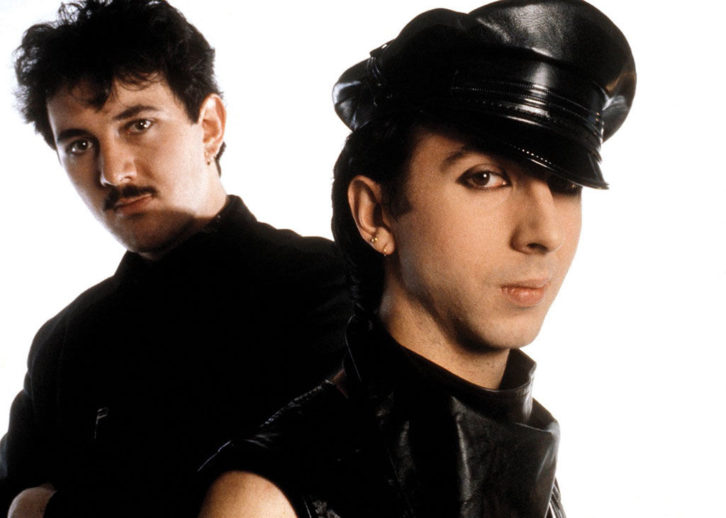
Thorne brought his own Synclavier into the project and set up Ball in the center of the control room, a spot that proved perfect for most of the sounds on the record, except for the bass, which Thorne says Ball’s Korg delivered effectively. Thorne’s Synclavier was in its first incarnation, which pretty much only existed in university music departments, so he was truly at the forefront of sound technology.
“It was Mike Ratledge of Soft Machine who had called me up and said he had seen this on the back of the Computer Music Journal,” Thorne recalls, thinking back to 1979. “I saw it and called them, and Mike and I went over to Norwich, Vermont, and had a look at it. I just put my finger down on the cathedral bell preset and said, ‘Yes, please.’ It was so far ahead of its time.”
Thorne actually had them make him a custom instrument, as the engineers had not quite thought about application during its initial engineering.
“When I first saw the Synclavier, it had a keyboard without the control panel attached,” Thorne explains. “And the control panel was really a clunky affair. It was rectangular and the buttons faced out. You would have to hold the top of it and sort of peer down to get to the buttons. Vermont being good at carpentry, I asked if they could mount it and angle it, and that’s what happened. That design was incorporated into the Synclaviers that followed.”
Without the Synclavier, Thorne and crew would not have had the sounds they had on “Tainted Love.” The overall piano sound came from the Synclavier, along with the orchestral swells and the long horn sound in the middle of the 12-inch single that leads into the transition to “Where Did Our Love Go?”
After the piano sound was down, they came up with the idea for the “bink bink” sound that’s carried throughout the song, and Thorne realized it on his Synare drum, a popular drum synth of the time.
“It didn’t sound particularly good, but it was something to hit,” Thorne recalls. “So we went for the snare sound, but it sounded lame to me, so I thought about putting a really fast delay on it and then I thought to feed it back. I was using a Delta Labs DL4. That piece of equipment is unique in that, if you turn the feedback all the way up, it wouldn’t spin off. It had some sort of internal limiting. I could turn it all the way up on some sort of fast delay. The overall sound would last longer, so initially it was just a single tone reflecting the repeat of the delay. So you just heard a ‘bing, bing.’ Then I screwed around with the delay change, which you could sweep, and that’s where that sort of strange metallic sound came from. It never occurred to me it would turn into a hook.”
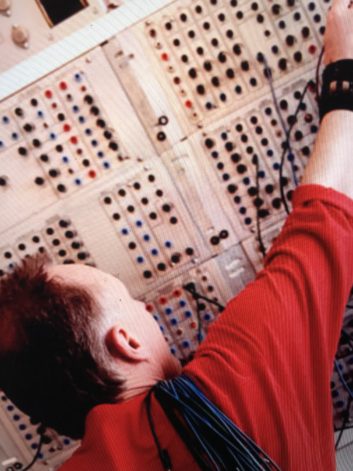
“He didn’t know how to pace himself,” Thorne says. “That wasn’t such a bad thing because the engineer caught it. He wasn’t happy with the way the compressor was set. In the run-through, Marc just blasted away, and Paul wasn’t very happy about the settings and how the needles were going. I said, ‘No, no no, don’t touch a thing, he’s singing his heart out.’ We tried to do it again, but that’s the take we kept. He nailed it.
“The choice between mics with vocals has to do with coloration, and with the 87 there’s so little coloration you can take the sound anywhere you want to and that was terrific.
“I had an incident later when I was doing a Siouxsie and the Banshees single,” he continues. “We actually didn’t get along very well because I just put up my 87, also remembering that when a vocalist wants to sing, they want to sing now. I figured Siouxsie wants to sing now and she delivered, and she called me at home later on saying I hadn’t tried hard enough. We got into a bit of a set-to on that one. So we went into the studio the next morning and set up the ‘American press conference’ (mics). Guess which microphones came out the favorite?”
Back to “Tainted Love.” They went straight from recording into mixing, and Thorne says the mixing process was straight-ahead but arduous, considering the 9-minute length of the song.
“For the dub mix we wanted to throw in delays here, there and everywhere,” he recalls. “I remember just running from across the control room to get from one piece of equipment to another, and it was everybody’s hands on some control because you couldn’t automate those things. You can now, but then we just had to grab the knob, and it was hilarious, really, just rushing across the control room having to push somebody out of the way to get at it in time.
“The equipment was really quite primitive at the time,” Thorne adds. “The one thing that record has is energy. When you’re just screaming around the place just trying to grab a knob, the adrenalin gets going. With contemporary mixing, it’s possible to just shave it carefully a bit here and a bit there; it’s all under control. There’s no danger of it collapsing or anything. And somehow you can feel that in the final product.”
They finished mixing at 3 a.m. after a total of about four days. The 7-inch single runs 2:41 and the 12-inch version lasts 8:58.
The 7-inch was remixed at Mediasound in New York with Harvey Goldstein engineering because Roger Ames of Polygram’s London Records thought it sounded too mono, which Thorne had done intentionally.
“I thought, ‘This is a flat-out pop single,’ so I thought like an old-fashioned pop single,” Thorne says, explaining that the instruments were very focused. “Roger Ames at the record company said, ‘We would really like it more spread out’—in other words more contemporary sounding.”
Thorne says the remix ends when the Supremes’ “Where Did Our Love Go?” begins, explaining, “On the dance floor, mono works pretty well.”
“Tainted Love” also worked pretty well. It quickly reached Number 1 on the U.K. singles charts and became the best-selling single of 1981 there.
The song experienced quite a ride on the U.S. charts. It entered Billboard’s Hot 100 on January 16, 1982, at No. 90 and seemed to peak at 64. It fell to No. 100 on February 27. After spending a second week at No. 100, it started climbing and took 19 weeks to crack the Top 40, reaching No. 8 during the summer of 1982. “Tainted Love” spent a then record-breaking 43 weeks on the Hot 100.
“For some reason, we really made a mark with this one,” Thorne says. “Of course, we didn’t think it at the time.”
